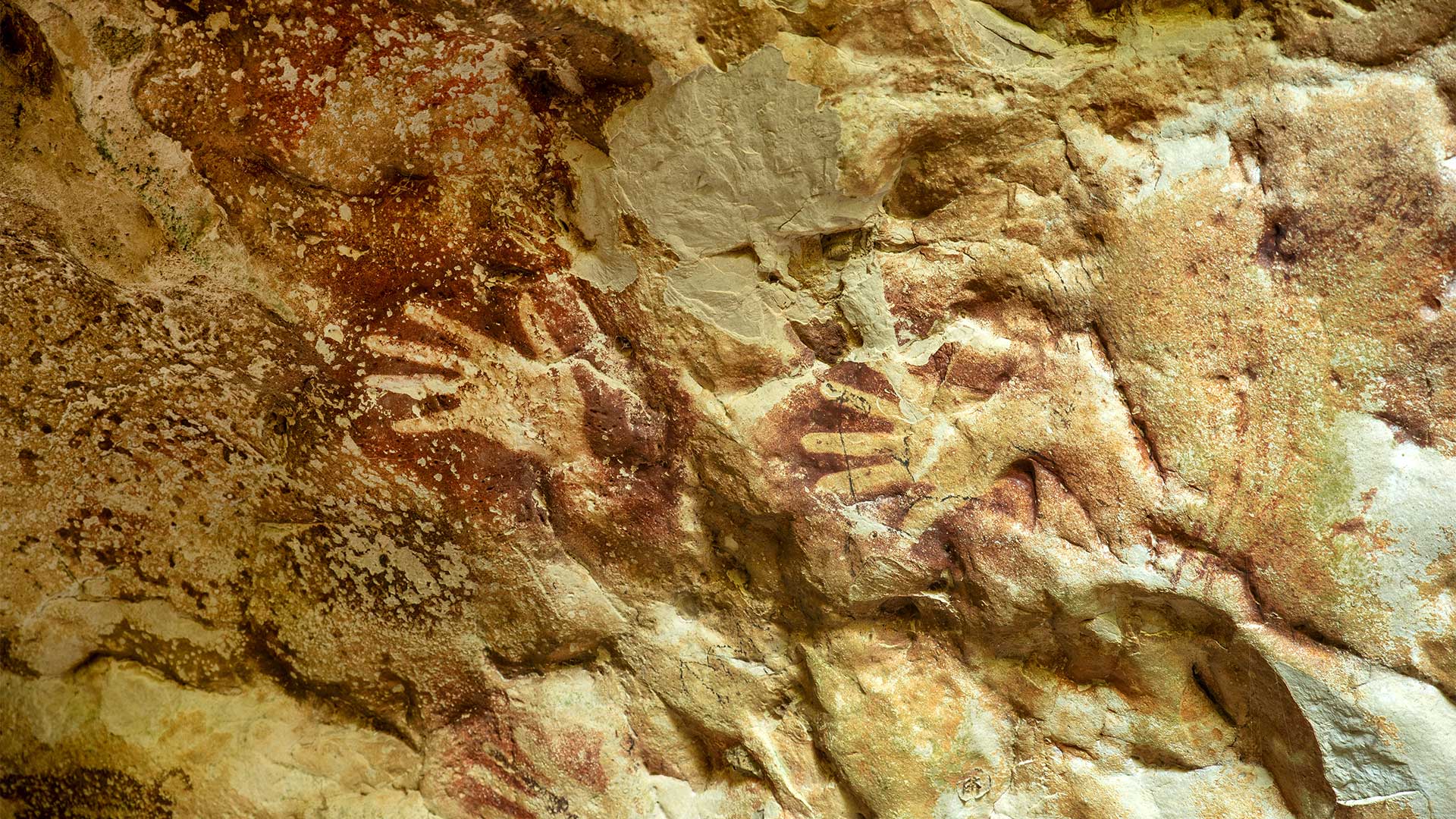
More evidence has emerged that cave art did not all originate in Europe with the discovery of world’s earliest-known figurative painting in Borneo.
Hidden in the depths of a nearly inaccessible cave, the depictions of cow-like animals from the site have been dated to around 40,000 years old, according to The Independent. It has been known since the 1990s that the caves of Borneo’s East Kalimantan province contain thousands of images, ranging from primitive depictions of animals and humans to hand stencils and intricate motifs. But dating them has proved difficult.
A crust of limestone that has formed over the paintings over the course of millennia has proved key for scientists as they look to date the works. They found that by scratching off samples of this crust they could establish the most accurate estimates yet for the age of the paintings using a sophisticated technique known as uranium-series analysis.
“The oldest cave art image we dated is a large painting of an unidentified animal, probably a species of wild cattle still found in the jungles of Borneo. It has a minimum age of around 40,000 years and is now the earliest known figurative artwork,” said Professor Maxime Aubert, a researcher at Australia’s Griffith University who led the research team whose study has been published by the journal Nature.
According to the researchers the reddish orange animal paintings primarily resemble the Bornean banteng cattle, but some may also represent animals that have since become extinct. Hand stencils in the caves were dated to roughly the same time, indicating a tradition of rock art emerged across the region between around 52,000 and 40,000 years ago. Intriguingly, this coincides with the beginnings of cave art in Europe.
The same caves contain another series of paintings created using a dark purple pigment, including “stick-men” human figures. The research team say these images belonged to an entirely separate later phase that emerged between 21,000–20,000 years ago.
“It looks like there was a transition from depicting the animal world to the human world, and it’s interesting because I think we have the same thing in Europe… on the opposite side of the world,” said Professor Aubert.
The team’s co leader Dr Pindi Setiawan, an Indonesian archaeologist based at the Bandung Institute of Technology, says that exactly who the ice age artists of Borneo were, and what happened to them remains “a mystery.” He added: “The new findings illustrate the story of how cave art emerged is complex.”